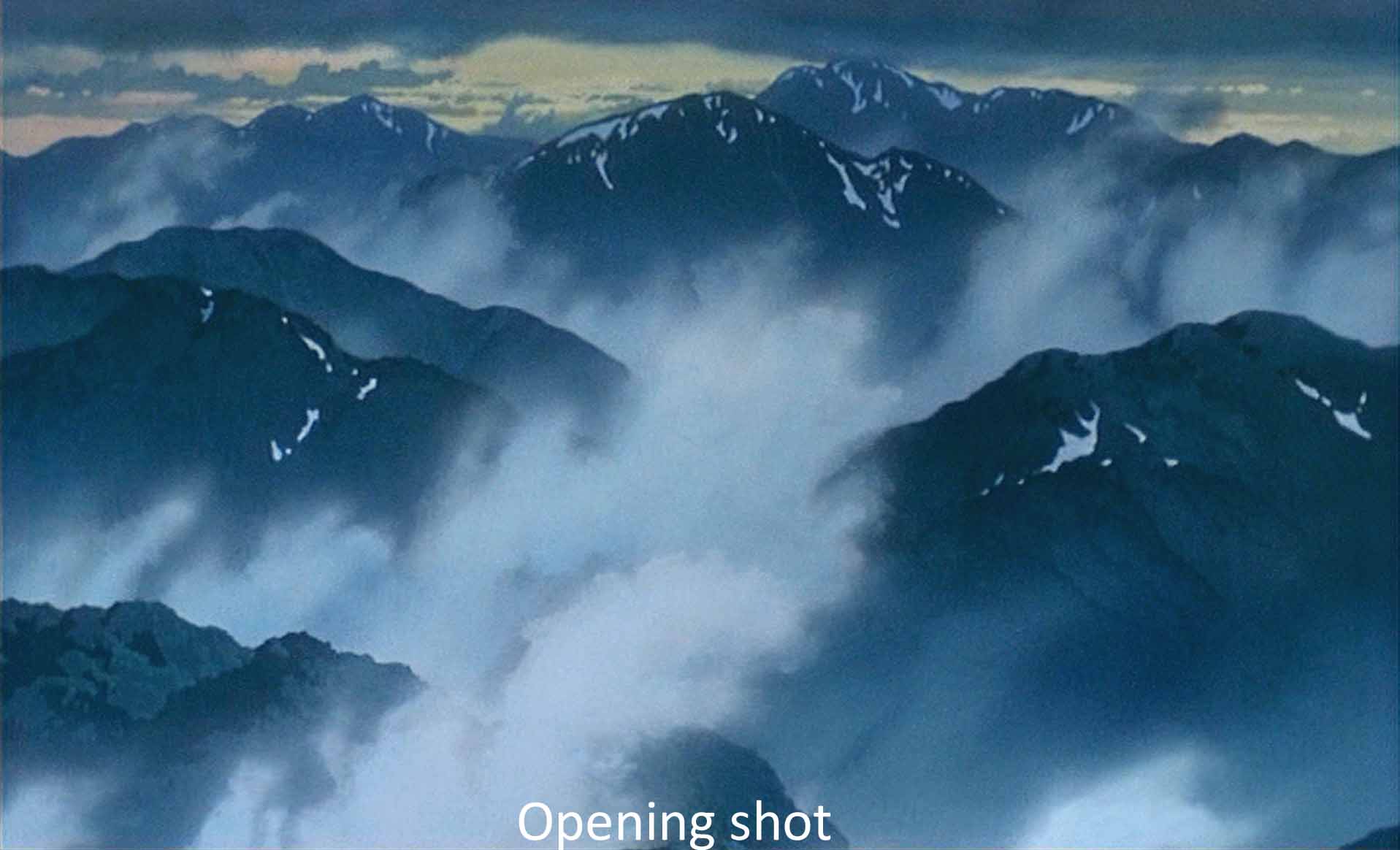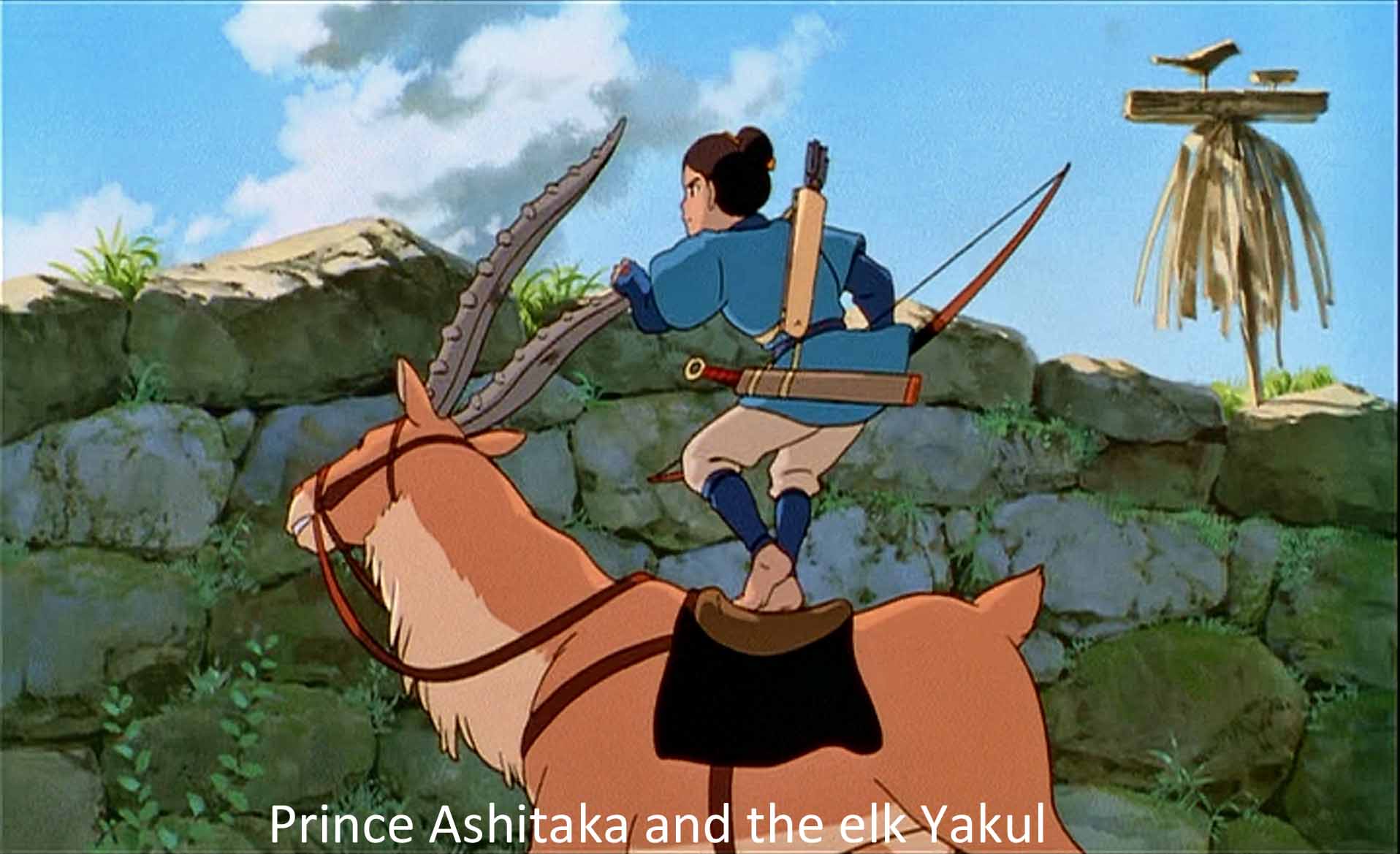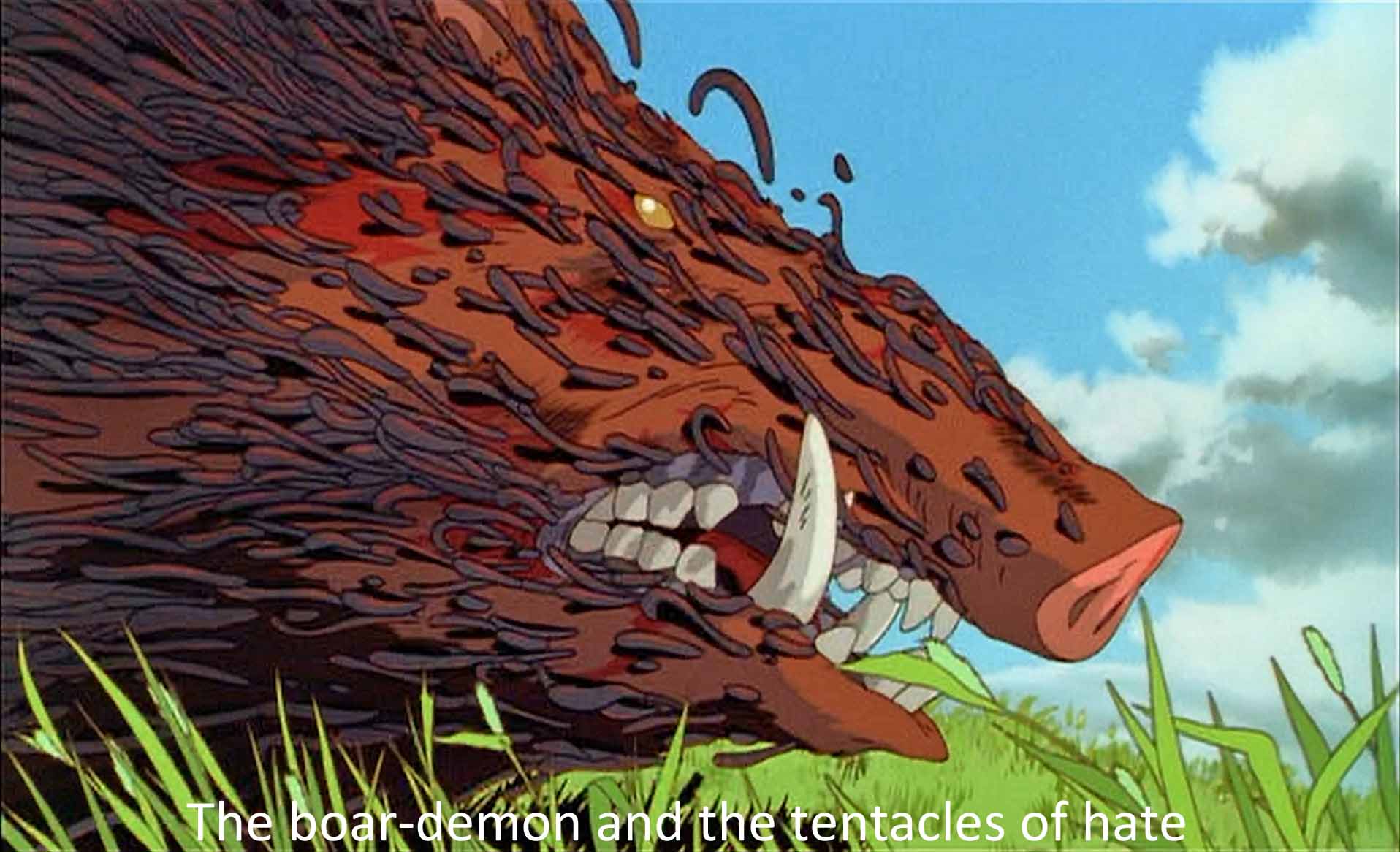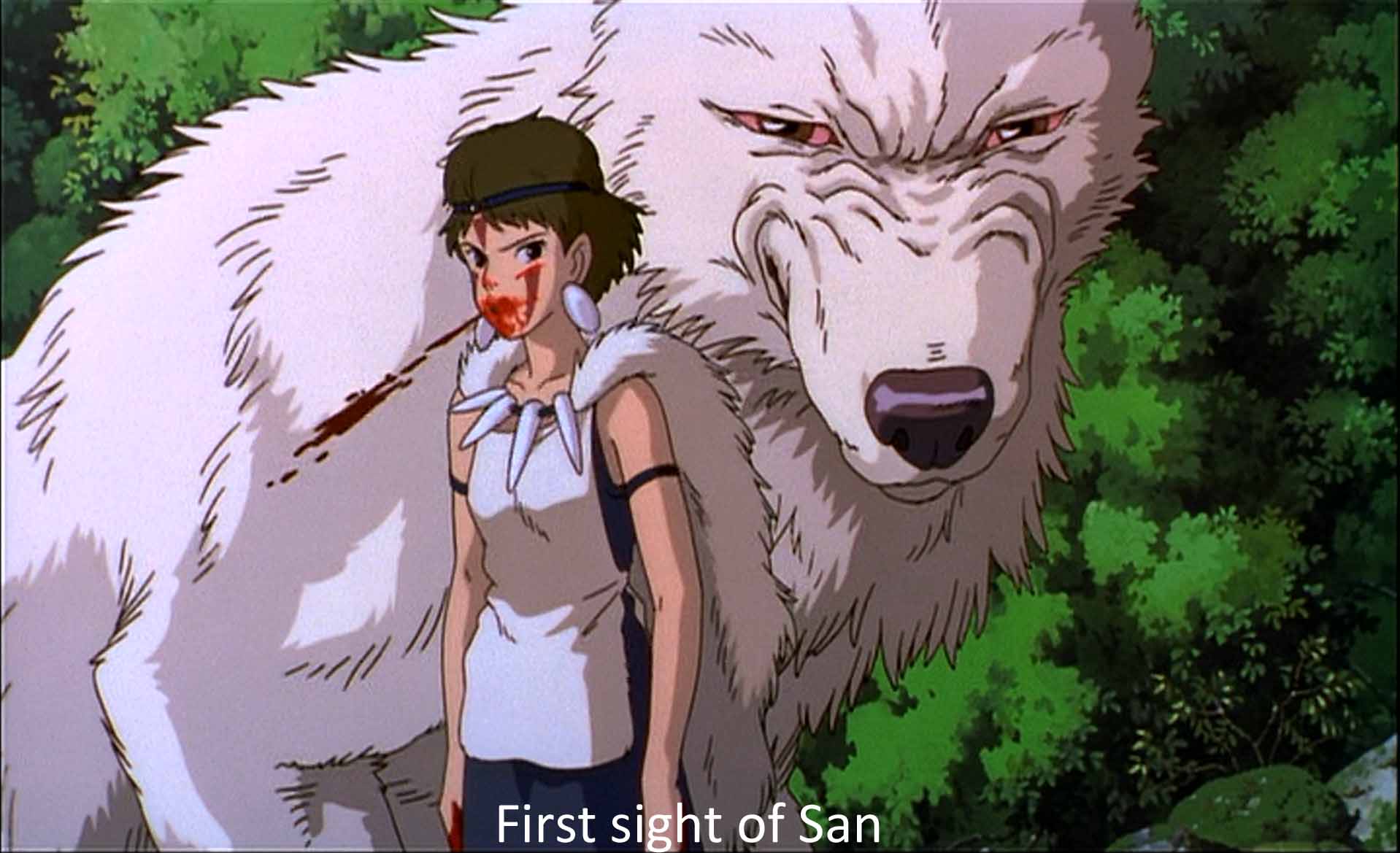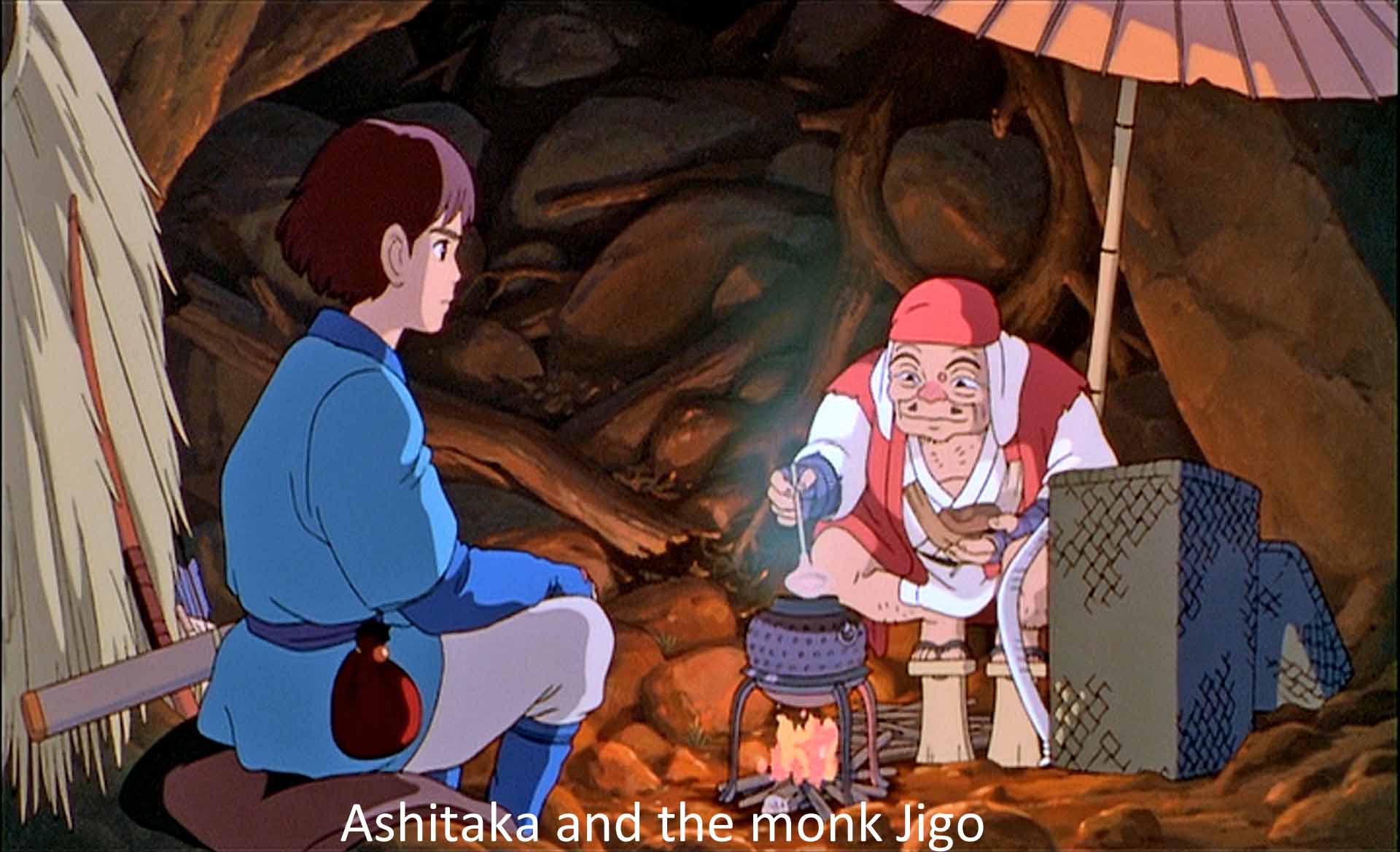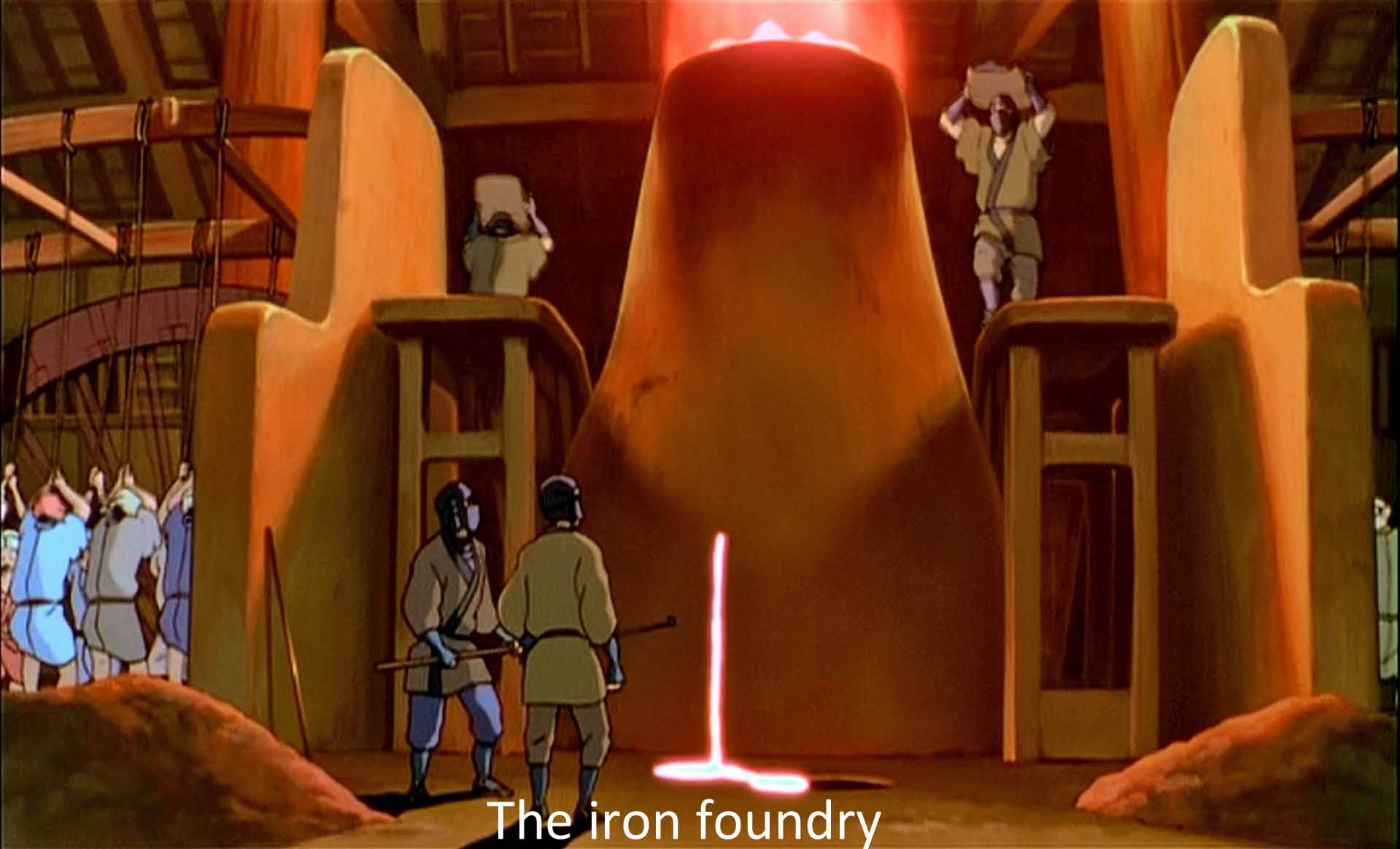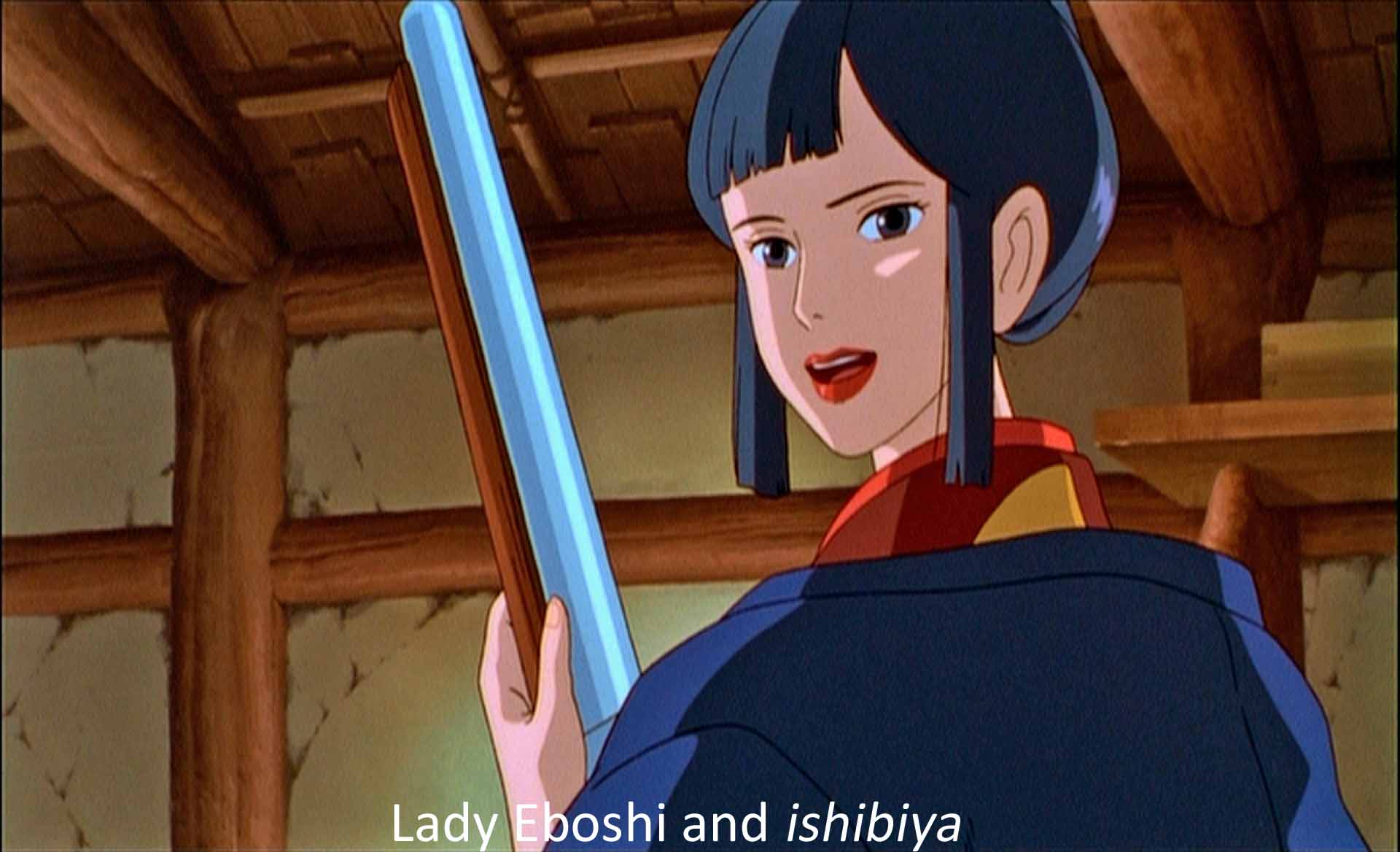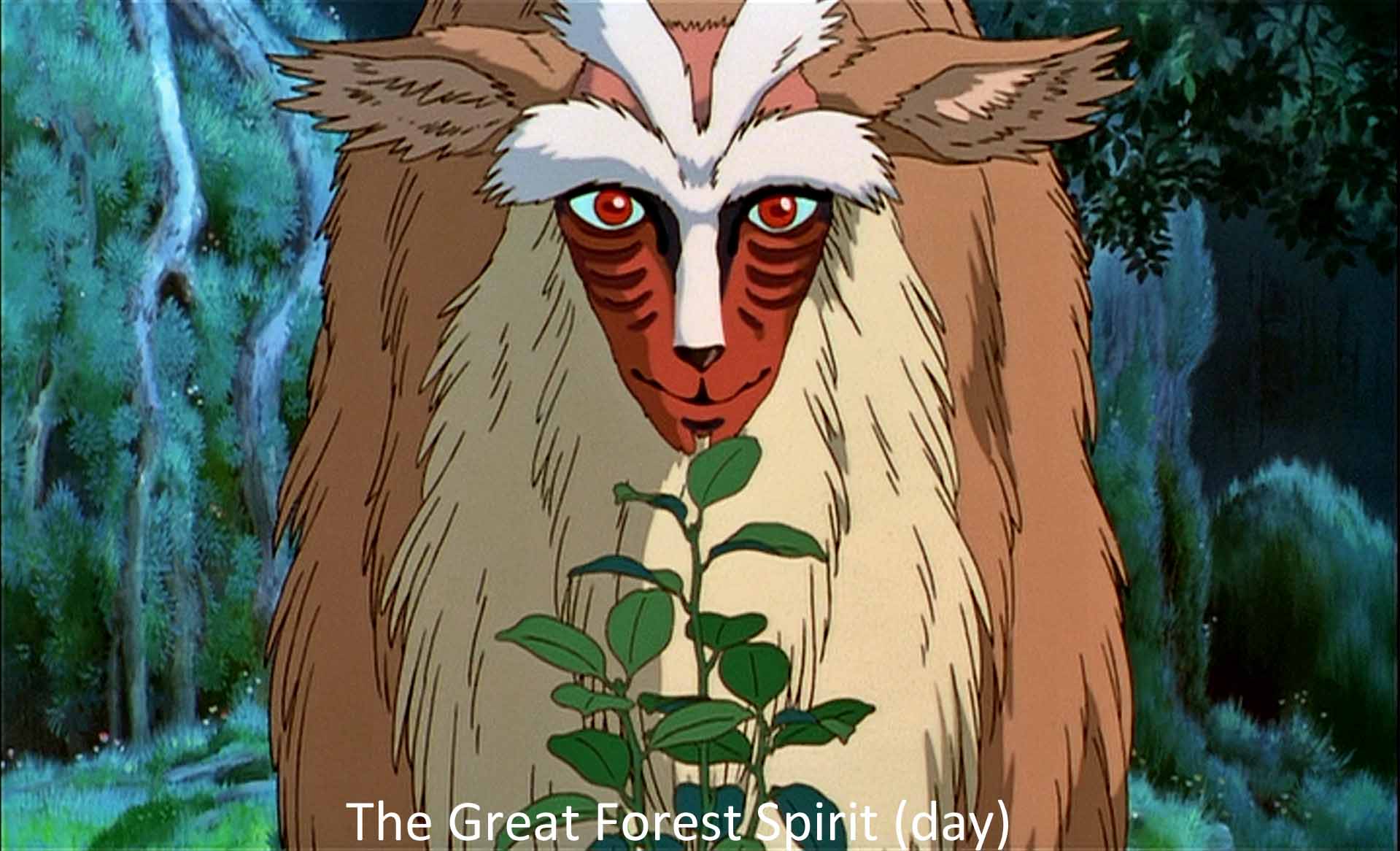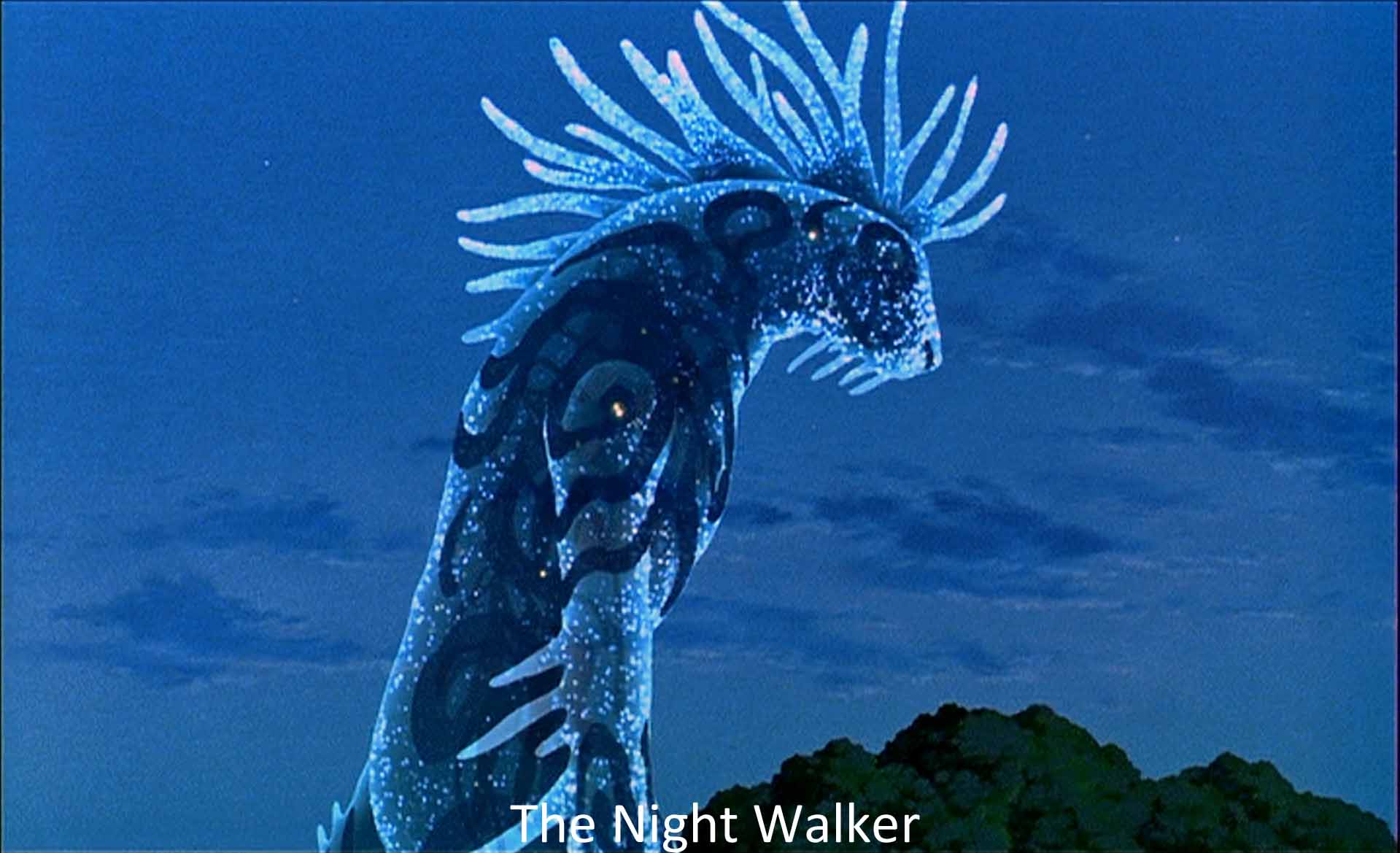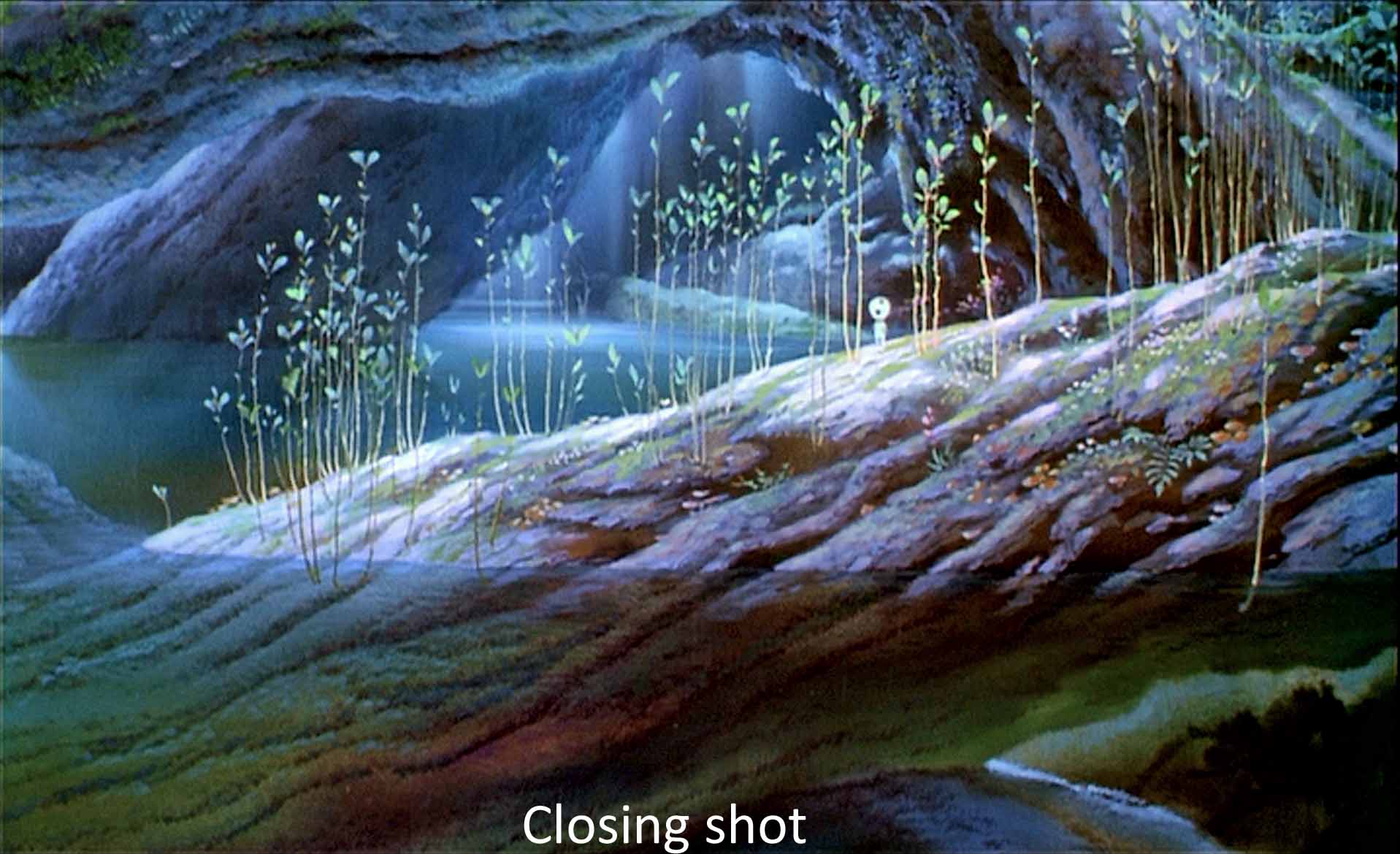Think not of the Saturday afternoon cartoons of our youth. Nor recall Comedy Central. And fear not Disney. Disney is only the American distributor, and Disney has promised not to disneyfy these remarkable works of art. Japanese anime have evolved a distinct aesthetic, much more so than cartoons more familiar to us as Americans. And Hayao Miyazaki is the master of anime.
Miyazaki wrote and pictured Princess Mononoke in the late Muromachi period of Japan, around 1470 CE. The film is thus what the Japanese call a jidaigeki, a period drama. Akira Kurosawa has made the genre familiar to American moviegoers by such films as Rashomon (1950) or Seven Samurai (1954), but the medieval setting is unusual for Miyazaki. A deeply committed environmentalist, he chose a period in which the Japanese changed their previously reverent attitude toward nature. Iron production grew, and the Japanese began cutting down a lot of their trees for charcoal to feed the smelters and foundries. People began thinking of nature as something to be controlled and used rather than revered. Naturally (no pun intended), an environmentalist like Miyazaki finds this troubling. The opening and closing shots of this anime show the forest. This film is about two sides struggling for control of the forest, indeed of all nature.
Muromachi was a period in which the rigid class structure of those Kurasawa films, warlords, samurai, farmers, and artisans, hadn’t yet taken shape (although we begin to see it in this film). Also, in this period, women had more freedom and power. In this film, two strong women battle for control of the situation. One is Lady Eboshi (voiced by Minnie Driver in the English dub). She has built and runs Tataraba, an ironworks, and she dresses like a samurai. The other, San (voiced by Claire Danes), is a human child raised by wolves and devoted to the forest. Eboshi calls her Mononoke-hime, englished as Princess Mononoke, but Mononoke is a description, not a name. Mononoke-hime means “princess of the evil spirits.”
As I read Princess Mononoke, I see a persistent duality informing its characters and action, a duality that partly comes from Shinto tradition. Carmen Blacker writes in her anthropological study of shamanistic practices in modern Japan that, in Shinto, “our human world is no more than a narrow segment of the cosmos . . . beyond it lies a further realm, altogether “other,” peopled by beings non-human, endowed with powers non-human, whose whole order of existence is ambivalent, mysterious, and strange” (2). “Their nature is non-moral, ambivalent, perilous, unpredictable” (24), just the thing for an anime. As a result, someone has said, Japan has eight million gods. Their “other” world can invade ours freely. We, however, can enter theirs only through special gateways and with difficulty and peril to ourselves as in Princess Mononoke. That makes for a complicated plot as follows:
The film begins when a boar-demon, Nago, covered with the poisonous, wormy tentacles of hatred, attacks an Emishi village. The Emishi were aboriginal peoples of Japan eliminated around 800 BCE by the Yamato dynasty that still reigns today. Prince Ashitaka of the Emishi is the hero. He kills Nago, but in the process the poisonous worms “curse” and corrupt his right arm. The wise woman of the village tells him he must leave the tribe. He may find a cure in “the West.”
As he goes west, Ashitaka comes upon a battle. Warlord Asano is attacking a village. The prince, given superhuman strength by the poison in his right arm, drives off the attackers. He meets Jigo (Billy Bob Thornton), a greedy Buddhist monk, wise in the ways of the world, maybe too wise. Jigo tells him he may find a cure for his wound from the Forest Spirit (Shishi-gami). The Forest Spirit, he explains, exists as a deer-like spirit during the day and as the fearsome Night Walker after dark.
Ashitaka continues west. Meanwhile Lady Eboshi (Minnie Driver) leads a rice convoy through the forest to Irontown. They are attacked by giant wolves led by the wolf-god Moro. Using an early form of gun ishibaya (stone-fire-arrow), Eboshi drives off the wolves and wounds Moro.
In the forest, Ashitaka discovers two men hurt in the battle. As he takes them back to Irontown, he catches a glimpse of San, the wolf-girl, tending Moro’s wound. Ashitaka takes the men back to Irontown, where Oboshi refers to San as Princess Mononoke (Princess of the Evil Spirits). Eboshi shows Ashitaka what she has built, an impressive iron foundry, using wood and ironsand from the forest. She has freed prostitutes who now run the bellows, and she rescued lepers who now design the guns. The iron and guns have aroused the greed of warlord Asano and the destruction of the forest has angered the forest gods. It was one of Eboshi’s bullets that corrupted the boar-god who attacked Ashtaka’s town and cursed Ashitaka. Yet Eboshi has preserved a bit of nature in her garden, carefully hidden away from the iron and guns.
In revenge for the wounding of her mother Moro, San attacks Irontown and is about to kill or be killed by Eboshi when Ashitaka intervenes. As he is using his superhuman strength to open the giant gate and carry her back to the forest, a villager shoots him and, in the forest, he falls, unconscious and dying. San is about to kill him when he tells her she is beautiful. She decides to trust him, and takes him to a pond, lair of the Forest Spirit, who cures his bullet wound (but not his poisoned right arm).
A large clan of boars now attacks Irontown, trying to save the forest from Eboshi. She joins forces with the mercenary Jigo who has assembled troops from warlord Asano. They launch a combined attack on the forest and animals. Jigo wants to give the head of the Forest Spirit to the Emperor for a hill of gold; Eboshi wants to take over the forest for its iron ore.
Multiple bullets corrupt the boar-god Okkoto, and Jigo’s men trick him into leading them to the Forest Spirit. San is engulfed and poisoned in Okkoto’s snaky tentacles, but is rescued by Moro and by Ashitaka’s proclaiming his love. Eboshi and Jigo take the head from the Night Walker whose body now becomes deadly. The forest begins to decay, and the funny little tree spirits begin to die. Ashitaka and San grab the god’s head back from Jigo and return it. The Forest Spirit falls into its pond, curing both San and Ashitaka.
In the finale, San and Ashitaka agree that they love each other, but agree also to live apart. Ashitaka will live in Irontown, helping Eboshi rebuild. San will stay in the forest protecting it. A single tree spirit appears, a sign of harmony between forest and foundry, animal and human.
This is the world of Princess Monomoke. We have two human spaces, the stone-age Emishi community in the East and the iron-making community of Tataraba in the West. A great forest abuts both, and, the voiceover prologue tells us, “In ancient times, the land lay covered in forests, where from ages long past dwelt the spirits of the Gods. Back then, man and beast lived in harmony. But as time went by, most of the great forests were destroyed. Those that remained were guarded by gigantic beasts, who owed their allegiance to the Great Forest Spirit. For those were the days of Gods and of Demons.”
”East” is a traditional farming society that plans its future by magic stones. It is governed by traditions that require, for example, that tribe members wear a topknot or that the group not watch Ashitaka’s departure. The West (note the name) is more innovative, technologically advanced, and governed by reason and planning. The West is the future in which there will be iron and guns and manufacture. There, the warlord Asano who menaces Irontown foreshadows the rigid social structure that is emerging of warlords, samurai loyal to them, artisans, and farmers. The East is the past, and it is disappearing. The West is the future. The forest abuts both East and West, and it is a world of sometimes benevolent, sometimes maleficent forces—unknowable except by experience, opaque to the magic of the East or the rationality of the West.
Then there is the duality between the forest ruled by animals (as gods and demons) and the world of human communities, East and West. There are good spirits and there are demons. Sometimes the forest, nature, is benign, as with those cute little tree spirits. Sometimes it is deadly as with the boar-gods and their snaky tentacles. There are demon enemies (Nago and Okkoto) and human enemies (Asano and his samurai or Jigo).
All the characters are dual in this way. Lady Eboshi has two sides. She relentlessly pillages the forest, and her guns have led to greed and violence. But she also has rescued prostitutes and lepers and given them work (although there are left-wing sites that argue Eboshi is repeating society’s isolation of these victims). San has two sides, wolf and human. Ashitaka himself has two sides. He can be incredibly violent (as when he beheads one of Asano’s thugs with a single shot of a stone-tipped arrow). Or he can be incredibly benevolent as in his final speech to San, preaching forgiveness and harmony. (Some writers even call him a Christ-figure, between two worlds, calling for love.) Ashitaka’s wound has two results: superhuman strength—he can open a gate it takes ten men to move—and a disease that will weaken and kill him.
There is no “bad guy” in this anime (unlike the usual Disney scenario). The wolf-god Moro can express a gentle melancholy, “I sit here and listen to the pain of the forest,” but she can also furiously attack the rice convoy and other mortals. Even Jigo, mercenary and greedy as he is, helps Ashitaka in the village and aids his escape from a trio that wants to steal the gold he may have.
The Forest Spirit exists in a day form and a night form. It (or she or he) has an animal’s face and body but human eyes. It can give life and take it away—the flowers and plants that sprout from his footsteps and then wilt. His day form is benign. His Night Walker version is scary. That is to say, life and death—so paired, they are scary. So far as he is concerned, the ending is ambiguous. San says the Forest Spirit is dead, but Ashitaka declares that it will never die. And I suppose we have to accept the duality.
Sometimes there is fighting between the “other” world and “our” world, but we can hope for harmony as in the finale. We are to accept these dualities with love and respect for their very difference. The film leaves us with the separation of the lovers, the forest’s San and the town’s Ishitaka. They will live separated, but at peace with the difference between them. They will lovingly visit from time to time.
I think, in short, that that is what this film is finally about, duality, which could be conflict, but duality resolved in a harmony made possible by restraint and distance. It is a message a psychiatrist could endorse—or an artist.
In this context, belief in a “this” world and an “other” world, beautifully suits the anime medium. The detailed and realistic backgrounds, a representational art, can represent one kind of reality. The outlined figures in the moving foreground, these conventionalized figures, gods, demons, huge animals or stylized humans with reshaped eyes and bodies can represent a different reality. And the styles can be reversed. The animator can do whatever the story needs. No realistic drama could so doubly represent.
To western eyes, anime and Princess Mononoke may seem exotic, excessively “Japanese.” Certainly some dismiss this genre as: “big eyes, big hair, big boobs, and big robots.” But surely that is too simple. Like other anime, Miyazaki’s works render highly abstract ideas in visual or narrative terms. Miyazaki’s anime may look like children’s cartoons, but looked at closely, they are beautifully unified and pleasingly subtle works of art.
